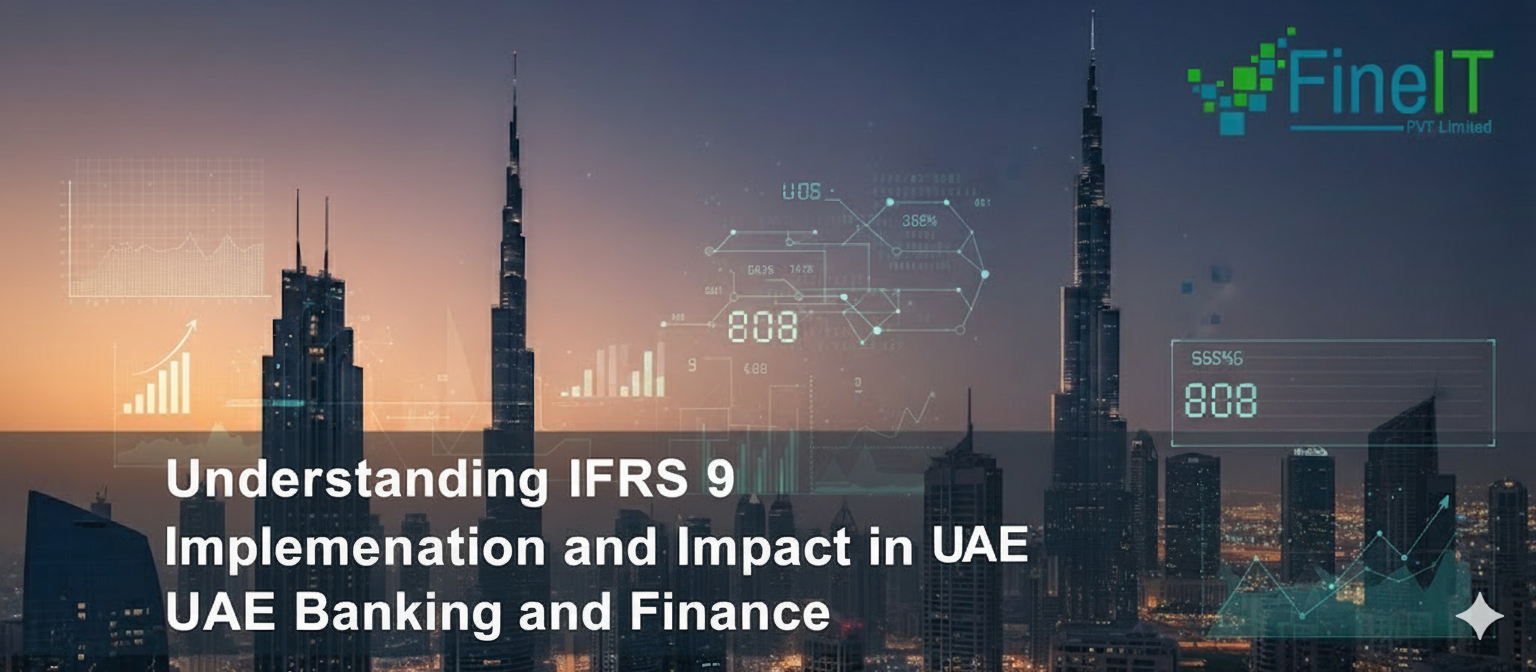The financial services sector in the United Arab Emirates (UAE) operates under a strong mandate for adopting global financial best practices. The transition to the International Financial Reporting Standard 9 (IFRS 9) has been one of the most significant regulatory shifts, fundamentally changing how banks and financial institutions in the UAE account for and manage their financial instruments.
IFRS 9 replaces the incurred loss model of IAS 39 with a forward-looking Expected Credit Loss (ECL) model. This paradigm shift was designed to address the “too little, too late” criticism of the old standard, ensuring that banks provision for potential credit losses earlier, thus enhancing financial stability and transparency.
The Pillars of IFRS 9 and UAE Compliance
IFRS 9 is structured around three main phases, all of which required meticulous attention from UAE institutions:
- Classification and Measurement: This determined how financial assets (like loans and bonds) are valued on the balance sheet—either at amortized cost, Fair Value through Other Comprehensive Income (FVOCI), or Fair Value through Profit or Loss (FVTPL). UAE banks had to conduct a comprehensive “business model” and “cash flow characteristics” test to categorize their vast portfolios.
- Impairment (The ECL Model): This is the most complex phase. UAE banks must calculate provisions based on a three-stage model:
- Stage 1: Performing assets (no significant increase in credit risk since origination). Provision is calculated based on 12-month expected losses.
- Stage 2: Underperforming assets (significant increase in credit risk). Provision shifts to lifetime expected losses.
- Stage 3: Defaulted assets (objective evidence of impairment). Provision remains at lifetime expected losses, and interest is recognized only on the net carrying amount.
- Hedge Accounting: This phase aligned accounting treatment with risk management activities, simplifying the rules to better reflect economic hedging.
The Central Bank of the UAE (CBUAE) has been crucial in guiding this implementation, issuing specific circulars and supervisory frameworks to ensure uniformity and rigor across the Emirates’ diverse banking system.
Key Implementation Challenges for UAE Banks
The strict requirements of the ECL model posed unique challenges to the highly diversified and sophisticated UAE banking sector:
- Data Aggregation and Quality: IFRS 9 requires granular, historical data on defaults and macroeconomic variables. Banks in the UAE had to invest heavily in data warehouses and analytics platforms to clean, standardize, and aggregate data across numerous business lines and legacy systems to feed the new ECL models.
- Macroeconomic Forecasting: Calculating expected losses requires integrating forward-looking information on key economic drivers for the UAE and the broader region (such as oil prices, real estate values, and interbank liquidity). Banks faced the challenge of developing robust, justifiable scenarios and probability weights for these forecasts.
- Modeling Expertise: Developing, validating, and maintaining the highly specialized statistical models (for PD, LGD, and EAD) required a deep pool of quantitative analysts and risk modelers. This talent was often sourced externally, highlighting a short-term need for greater in-house expertise.
- Operational Integration: Compliance was not isolated to the Finance department; it required deep integration between Risk, Finance, and IT. Banks had to revamp internal controls and governance to ensure consistency between risk management and financial reporting metrics.
Strategic Impact and Opportunities
Beyond mere compliance, IFRS 9 has acted as a catalyst for strategic change in the UAE banking sector, driving lasting operational benefits:
- Enhanced Risk Culture: The standard compels banks to think more proactively about risk throughout the entire lending cycle, leading to stronger credit underwriting standards and a more sophisticated, risk-aware culture across the organization.
- Smarter Capital Allocation: With clearer insight into the expected losses of different asset classes, banks can more efficiently allocate capital to products and segments that offer the best risk-adjusted returns. This leads to more disciplined growth.
- Accelerated Digital Transformation: The intensive data and computation demands of ECL models forced banks to accelerate their adoption of advanced analytics, machine learning, and cloud-based solutions. This modernization has long-term benefits for efficiency and competitive advantage.
- Increased Investor Confidence: Robust and transparent IFRS 9 reporting enhances credibility among international investors, shareholders, and rating agencies, reinforcing the UAE’s reputation as a secure and well-regulated financial market.
Conclusion
The implementation of IFRS 9 in the UAE banking and finance sector has been a successful exercise in elevating the standards of financial reporting and risk management to a global level. While the process was demanding, it has ultimately strengthened the resilience of the sector. The standard’s true long-term impact will be measured not just by compliance, but by the extent to which banks leverage the enhanced data and modeling capabilities to drive more strategic, risk-informed business decisions.



